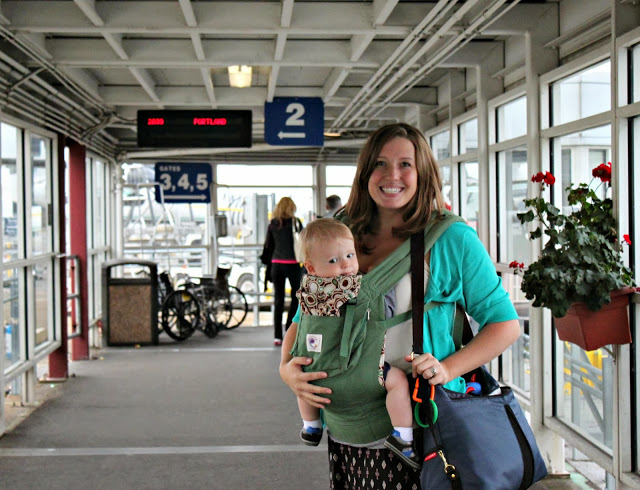Traveling with your baby may be a CHALLENGING task especially if you set off on a journey by plane. Not only that you have to be certain you managed to take everything you need aboard the plane but you also have to make sure you comply with all the regulations that apply in your case. Well, it’s not that intricate and obscure as it may sound. You’ll see that in an instant. Our aim in this article is to give an answer to some of the questions that you’re probably fretting about.
Health issues
Generally speaking, there isn’t a MINIMUM AGE for air travel. Nevertheless, a baby who’s just a few days old, that is less than seven days, will certainly need a certificate issued by a physician. Traveling by plane does not pose any problems for a healthy infant or toddler. Nevertheless, if it alleviates some of your concerns, you may see your pediatrician. Still, do not ponder a minute changing the flight arrangements if you baby is having an acute head cold or any other illness especially with high temperature.
You’ll also need to change the flight itinerary if your baby suffers from any contagious disease (whooping cough, measles, mumps, rubella, chicken pox). Besides, there are a series of health problems that are practically impossible to pinpoint at birth and which may develop later on.
Symptoms related to such conditions may become evident during a flight. Still, you can relieve the pain you baby is feeling in the ears during take off and landing by simply breast of bottle-feeding. This simple practice will balance the pressure felt by the infant in the ears.
Prices
More often than not, you’ll need to pay 10% of the regular fare. This price will be valid until your baby reaches his/her second birthday. This rate does not give you the right to have a separate seat for your child; he or she will fly as a LAP INFANT. Remember that in case your baby turns 2 during the flight, you will have to book a separate seat.
Carriers have different rates that apply in this case. Such is the children’s rate set by Swiss Air. Therefore, all the kids who reach their second birthday before or during the inbound journey need to have their own seat reservation for both the outbound and inbound journeys. Despite the fact that an adult may travel with no more than two infants, only one of them may sit on the adult’s lap.
The second baby will need a separate seat. You’ll have to deal with all these details the moment you book the tickets. Austrian, for instance has special services that may be used when you make the reservations: pre-reservation of seats so family members can sit together, baby cradle/bassinet (for infants from 6 to 9 months and with max. weight of 11 kg) on long-haul routes aircraft Boeing 777 and Boeing 767 as well as special baby and child meals (in Economy Class on flights of 3 hours and above). You’ll be able to use all these provided you make the pre-booking procedures at least 24 hours before departure.
Carry-ons
Consider having the following items packed in your HAND LUGGAGE as they’ll certainly be of great use during the flight:
- Comfortable blanket to help your baby feel warm and to protect it against the chill of the air conditioning.
- Your baby’s favorite toy, teddy or any other noiseless toys which usually entertain him or her.
- Wipers and diapers.
- A change-of-clothes.
- Bottles, pacifier, teething rings, anything that keep your baby busy.
- Any medication which you think you may use during the flight.
- Baby food if the carrier does not provide that. For instance, on intercontinental KLM flights, they have a selection of sterilized meals available for infants and toddlers up to 2 years.
Baby seats
You can book a separate seat for your baby or you may use your own car or baby seat. The seat must fit between the armrests of the plane seat (usually 42 cm/16.5 inches). With KLM, for instance, you’ll have to make advanced reservations if you choose to use of a car/child seat. You’ll will thus need to contact KLM Telephone Reservations or your local KLM ticket office.
Nevertheless, you’ll need to make sure that the seat is certified for air travel as a child seat may show no defects and must carry a visible seal of approval for use on board an aircraft by the European Union or an official government agency.

 En
En Es
Es Fr
Fr